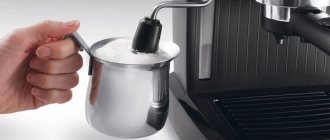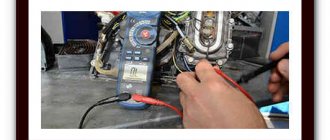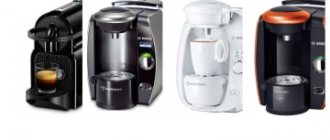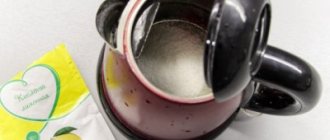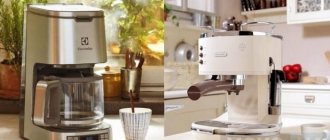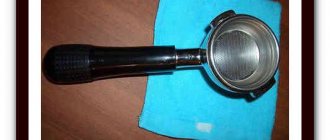The Italian brand Delonghi is known for its easy-to-use and durable coffee machines. In order for equipment to please its owners with a tasty drink for longer, it should be properly cared for and cleaned regularly.
Special cleaning agents are used to remove dirt and scale from coffee machines of this brand.
How does scale appear?
The water contains various mineral additives, which, under the influence of heat and high steam pressure, settle on the internal elements of the device. Gradually, the layer of deposits increases and blocks the flow of fluid through the internal channels. In addition to scale, the cold coffee supply unit and the cappuccino maker also become dirty. The device must be cleaned as a whole.
How to determine when it's time to clean?
If the coffee machine has a dirt indicator, then the cleaning procedure must be carried out when it is activated.
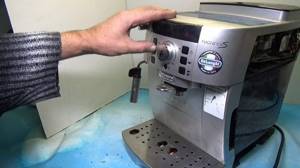
Such a device independently analyzes the level of lime deposits on internal surfaces and calculates the frequency of maintenance. This parameter is set by the manufacturer, and the signal itself appears on the coffee machine screen.
If there is no automatic alert, you should pay attention to the following signs:
- water leakage when not in use;
- detection of flakes or cloudy sediment in the finished coffee;
- increase in noise accompanying the operation of the device;
- reduction in supply pressure of the finished drink, intermittent stream;
- change in the taste characteristics of coffee.
The average maintenance frequency for a Delonghi coffee machine when supplying medium-hard water is once every 2-3 months.
How scale appears on a coffee machine
Before you figure out how to clean your Delonghi coffee machine, you need to know the main causes of scale build-up. The operating principle of coffee machines from leading manufacturers assumes that during the preparation of the drink, water vapor passes through the ground coffee under high pressure.
As a result of constant use, mineral deposits mixed with coffee resin accumulate in the internal components of the product. The circulation of liquid in the product becomes significantly more difficult, and the taste of the prepared coffee deteriorates significantly.
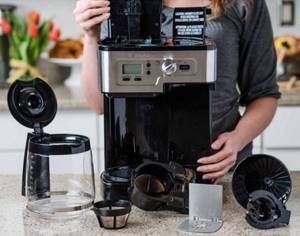
The coffee machine must be descaled regularly
It is important to mention that the rate of formation of such sediment greatly depends on the quality of the water, and therefore it is strongly recommended to use bottled water or thoroughly purified water using filter systems during the cooking process.
Tap water is characterized by high hardness, the presence of chlorine, mineral salts and other undesirable elements that can quickly lead to the appearance of scale.
When cleaning is necessary
When planning to find out which coffee machine cleaning product is best, you should familiarize yourself with the recommended frequency of such work. Regular cleaning will ensure a long service life of the product, avoiding its breakdown and reducing the quality of work. Detailed recommendations on the procedure, suitable products, and frequency of cleaning are contained in the instructions supplied with the product. Some models are equipped with a special indicator that can light up when scale forms.
When figuring out how to rinse a coffee machine, you should take into account that due to the absence of scale sensors in the design of the devices, the light indication cannot reliably guarantee its presence. This is because the device counts the number of cups of coffee made to determine the recommended cleaning time.
However, it is strongly recommended to carry out cleaning when a corresponding notification is detected, since it indicates that the resource provided by the manufacturer has been used up. Some models may be equipped with an operation lock feature that will prevent the device from being used until cleaning has been successfully completed.
What happens if you don't wash it?
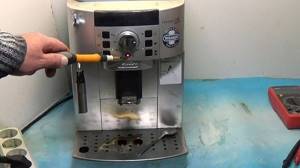
If you ignore the automatic notification or do not pay attention to other signs, then soon some of the device’s functions will stop working.
The deposition of limescale will accelerate as it is easier for salts to linger on the rough inner surface.
Consequences that can result from lack of care:
- changing the speed of water passage, which affects the taste of coffee;
- overheating of individual elements and their failure;
- the appearance of foreign sediment in the finished drink.
Do you use your coffee machine often?
Not really
What to use?
The care procedure is always described in detail in the instructions for the device. To remove contaminants, only specialized Delonghi products are used, which effectively remove scale and do not affect the taste of the finished drink.
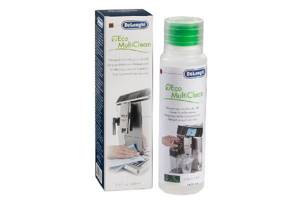
The preparations can be used both for home units and devices intended for professional use. As a result, internal parts do not wear out and retain their original qualities.
All Delonghi cleaning products are sold in concentrated form and must be diluted with water. The exact proportions are indicated in the instructions. Usually 500 ml of product is enough for four applications.
The use of folk recipes and household chemicals is unacceptable due to the constant contact of internal elements with food products and the danger of destruction of parts due to aggressive influence.
Metal graters and scrapers are also prohibited. They scratch the surface and limescale deposits on it at a faster rate.
On our website you can also read about how to clean a Nespresso coffee maker, more details here.
How to decalcify
Descaling a Delonghi coffee machine requires the use of special decalcifying water. If a message about the need for cleaning has already been received, add descaling liquid to the water container (the instructions indicate the dose) and run the machine in self-cleaning mode. The process will last about half an hour, the machine will indicate its end with a signal. Then wash the container, fill it with clean water and start the machine again to clean the internal parts again. Modern coffee makers are quite “smart” devices; they can independently remind their owners that they need to be cleaned of scale and clogging.
How to clean a coffee maker?
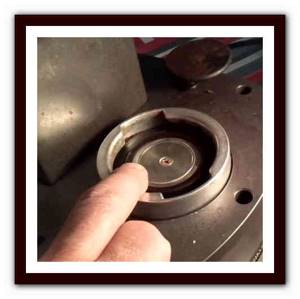
A coffee machine is one of the most popular household devices, which is now found in almost every home. With its help, you can prepare the freshest, most delicious and invigorating coffee drink within a few minutes. But to preserve the refined taste and rich aroma of coffee, it is recommended to carefully care for the device.

Capsule, carob and drip coffee makers require careful handling during everyday use. The formation of scale on the internal elements and the accumulation of bean residues can lead to a deterioration in the taste of coffee. Now we will tell you how to clean your coffee maker quickly and efficiently.
Cleaning using special products: step-by-step instructions

Some models of coffee machines have a self-cleaning function, which greatly simplifies preventative measures. But even without this option, you can clean the device efficiently and safely.
For machines with automatic descaling
In order to use this function, you should adhere to the following algorithm of actions:
- Connect the coffee machine to the electrical network.
- Scroll through the main menu on the device display by holding down the “P” key.
- Find the “Descaling” function and confirm your choice.
- Completely drain the water from the tank and pour the anti-scale agent diluted in advance according to the instructions into it. Confirm filling on the display.
- Place a container with a volume of at least 1.5 liters under the coffee tap.
- Confirm the action and wait for the message “The device is cleaning” to appear.
- After about 30 minutes, the message “Fill the tank” will appear on the screen. Drain off any remaining cleaning agent and fill the tank with clean water.
- Empty the water collection container and return it.
- Start the rinse cycle.
- Wait for the message “Rinse complete” to appear and confirm completion of the cleaning procedure.
Immediately after the process is completed, the device is ready for further use. No additional measures are required before preparing coffee.
No automatic deletion
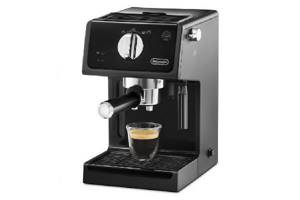
If the device is not equipped with an automatic cleaning function, this operation can be performed manually.
To do this you will need:
- Remove all liquid from the reservoir.
- Pour diluted anti-scale into it.
- Turn on the appliance and activate the coffee preparation program.
- Continue this action until all the solution has flowed out of the tank.
- Fill with clean water and rinse using the same procedure.
- After manual cleaning is completed, it is recommended not to consume the first 2-3 cups of coffee. They need to be drained, and subsequent portions of the drink can be served.
Have you cleaned your coffee maker before?
Not really
Decalcification of Delonghi coffee machines: step-by-step instructions for automatic and manual mode
Read the instructions carefully before using the product. Delonghi uses concentrates, they are poured into a container and diluted with water. There are marks on the bottles indicating how much product to pour.
If the drug gets on your skin or eyes, rinse with plenty of water.
Instructions for machines with automatic descaling
- Pour decalcifier (usually 100-125 ml) into the water tank.
- Add hot water (usually 800 ml) there. Hot is not boiling water. Boil, let stand for 3-4 minutes, and pour.
- Press the coffee button and pour 2 cups.
- Turn off the hot water tap.
- Make 4-6 more cups of coffee.
- Turn on the auto descaling program.
- Remove the removable device and rinse it under water.
Instructions for machines without automatic descaling
- The first 4 steps are the same as for the automatic one, just prepare enough cups of coffee so that all the solution comes out.
- Fill with cold, clean water and pour it all into the cups again.
- Remove the removable device and rinse it under water.
Decalcification should be carried out once a month if the water is hard, or once every month and a half if the water is normal. Focus either on the signals of the device or on the signs of plaque.
Video instructions for decalcifying a Delonghi coffee machine
How to process individual elements?

In addition to the internal components, other elements of the unit also need regular cleaning. They become contaminated not only with lime from the water, but also with grains of coffee or milk.
Holder
It often develops a dark coffee coating. You can get rid of it by soaking it in hot water.
The duration of exposure should be about 15-20 minutes.
Difficult stains can be rubbed off at the end of treatment with the hard side of a foam sponge. Metal graters and scrapers should not be used.
Infuser
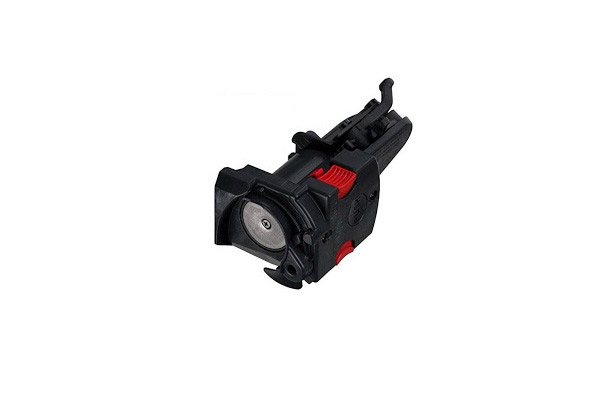
Cleaning is required much more often - approximately once every two weeks of active use of the unit.
- The unit must be removed from the device and washed with running water and a sponge.
- Dry and install back.
- If it is impossible to remove this unit (depending on the model), you should put a tablet for cleaning coffee machines in the coffee compartment, and place a small container under the horn.
- Start the drink preparation cycle and repeat it until the tablet is completely dissolved. As a rule, 4-5 repetitions of this operation are required.
- At the end, rinse the entire system several times with clean water using a similar scheme.
If you have a different brand of coffee maker, use the tips in this article.
Cleaning the cappuccino maker
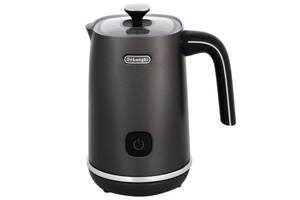
Milk often freezes in the narrow tube of the cappuccino maker, which subsequently interferes with the passage of steam into the container.
To clean it you will need to follow these steps:
- Drain all condensate from the cappuccino maker.
- Fill the unit with hot water with the addition of baking soda for 20 minutes - 2 tablespoons are required per liter of liquid. powder. To do this, you do not need to remove the device from the coffee machine; just dip its spout into a container with the solution.
- Rinse well. Wipe the entire assembly with a damp sponge and dry completely.
- The cappuccino maker is ready for use.
Helpful tips for use
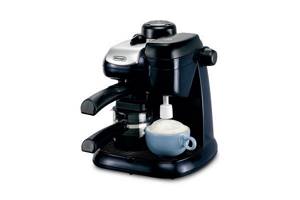
Caring for a coffee machine is not as difficult as it seems at first glance. It is enough to know all the potential dangers and take preventive measures in time:
- scale _ You should get rid of it immediately after the alert appears on the display. If this function is missing, you should make notes to yourself about the frequency of this procedure. A water filter will help reduce the time for processing and reduce the frequency of its implementation. It will soften and purify tap water;
- coffee oils . They settle on the internal parts of the device and over time distort the taste of the finished drink. Removal of these contaminants is required after every 200 coffee brewing cycles. For work, the same products are used as for descaling;
- coffee grounds . It hardens in the tubes of the device and impedes the passage of liquid. You can get rid of it by using the tube flushing function. It must be performed once every 2-3 weeks;
- milky plaque . If steam is poorly supplied to the milk from the cappuccino maker, then the culprit is milk deposits on its walls. It is possible to get rid of it using the method described above.
Before starting the first cleaning (and use in general), it is important to read the instructions from the manufacturer. It always details all the contraindications and nuances of using the programs.
Delonghi coffee machines require regular maintenance and cleaning. For this purpose, special cleaning products of the same brand are used. All of them are completely safe for humans and do not have any effect on the taste of coffee.
Cleaning procedure
In order to perform maintenance and get rid of scale in the product, it is advisable for the user to use the cleaning instructions supplied by the manufacturer. If such instructions are not available, you can use the standard method, which is suitable for the vast majority of devices.
When figuring out how to clean a Delonghi coffee maker, you must adhere to the following algorithm of actions:
- Rinse the container, pour 125 ml of product diluted in water into it to the maximum mark.
- Remove the filter holder and then place the reservoir under the cappuccino maker.
- Turn on the power of the device and run the cleaning program.
- After completing the procedure, stop the steam supply using the special handle.
- Rinse the tank and fill it with clean water to the maximum level.
- Turn on the steam and repeat the procedure without using a cleaning agent.
This type of coffee machine washing takes no more than half an hour, which allows you to quickly and effectively clean the product and maintain it in optimal condition. It is strongly recommended not to prepare a drink when there is an indication indicating the presence of scale, as this can quickly lead to damage to the device.
It is important to remember that some models from this manufacturer provide the possibility of decalcification in an automated mode, which allows minimizing the user's effort when cleaning.

